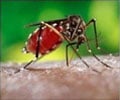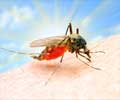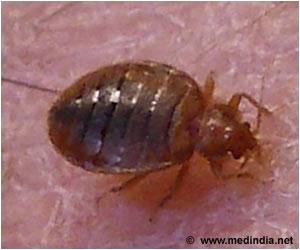Due to El Nio's high rainfall, Peru is witnessing its biggest dengue outbreak, with over 130,000 cases and a death toll nearing 200.
- El Niño and increased rainfall have caused tropical cyclones, creating ideal breeding grounds for mosquitos and leading to a widespread dengue outbreak
- Peruvian health officials are taking action to prevent dengue by eliminating mosquito breeding sites and raising awareness about the severity of the disease
- The US National Oceanic and Atmospheric Administration (NOAA) warns of the return of El Niño, resembling the intense 2016 phenomenon, which is expected to intensify throughout 2023 and 2024
El Niño's Impact: Rising Oceans, Intensified Cyclones, and Dengue Outbreaks
El Nino, which is characterized by cyclical warming of the oceans and changes in weather patterns, has caused tropical cyclones and increased rainfall in the Pacific (1✔ ✔Trusted SourceEl Niño and human health
Go to source). Excessive rainfall has provided mosquito breeding grounds, resulting in the widespread occurrence of dengue.
Peruvian Health Officials Take Action to Prevent Dengue Outbreaks
In response to the increase in cases, Peruvian health officials have taken steps such as preventing citizens from storing stagnant water in open containers. "Dengue kills," warned Peruvian Health Minister Rosa Gutiérrez, emphasizing the importance of eradicating mosquito breeding grounds and emphasizing the devastating repercussions of dengue.NOAA Issues Warning: El Nio Returns, Resembling the Intense 2016 Phenomenon
The US National Oceanic and Atmospheric Administration (NOAA) has officially announced the start of El Nio after three years dominated by the cooler La Nia pattern. This year's El Nio is especially worrying since it resembles the strong El Nio phenomenon that occurred in 2016 when the world endured a history warmest year. The intensity of El Nio conditions is expected to progressively grow during the year and into 2024, according to NOAA (2✔ ✔Trusted SourceENSO Diagnostic Discussion
Go to source). Climate scientists constantly monitor Pacific Ocean temperatures and declare an El Nio event when temperatures near the equator exceed historical averages by at least 0.9 degrees Fahrenheit for three consecutive months.
Peru Declares 'State of Emergency' in Response to Unprecedented Rainfall Threat
Peru has declared a two-month "state of emergency" in 18 of the country's 24 provinces, recognizing the urgent threat posed by excessive rains this year and next. Michelle L'Heureux, an NOAA Climate Prediction Center meteorologist, described the scenario as unprecedented, underlining the intensity of the problem.References:
- El Niño and human health - (https://pubmed.ncbi.nlm.nih.gov/11019461/)
- ENSO Diagnostic Discussion - (https://www.cpc.ncep.noaa.gov/products/analysis_monitoring/enso_advisory/ensodisc.shtml)












